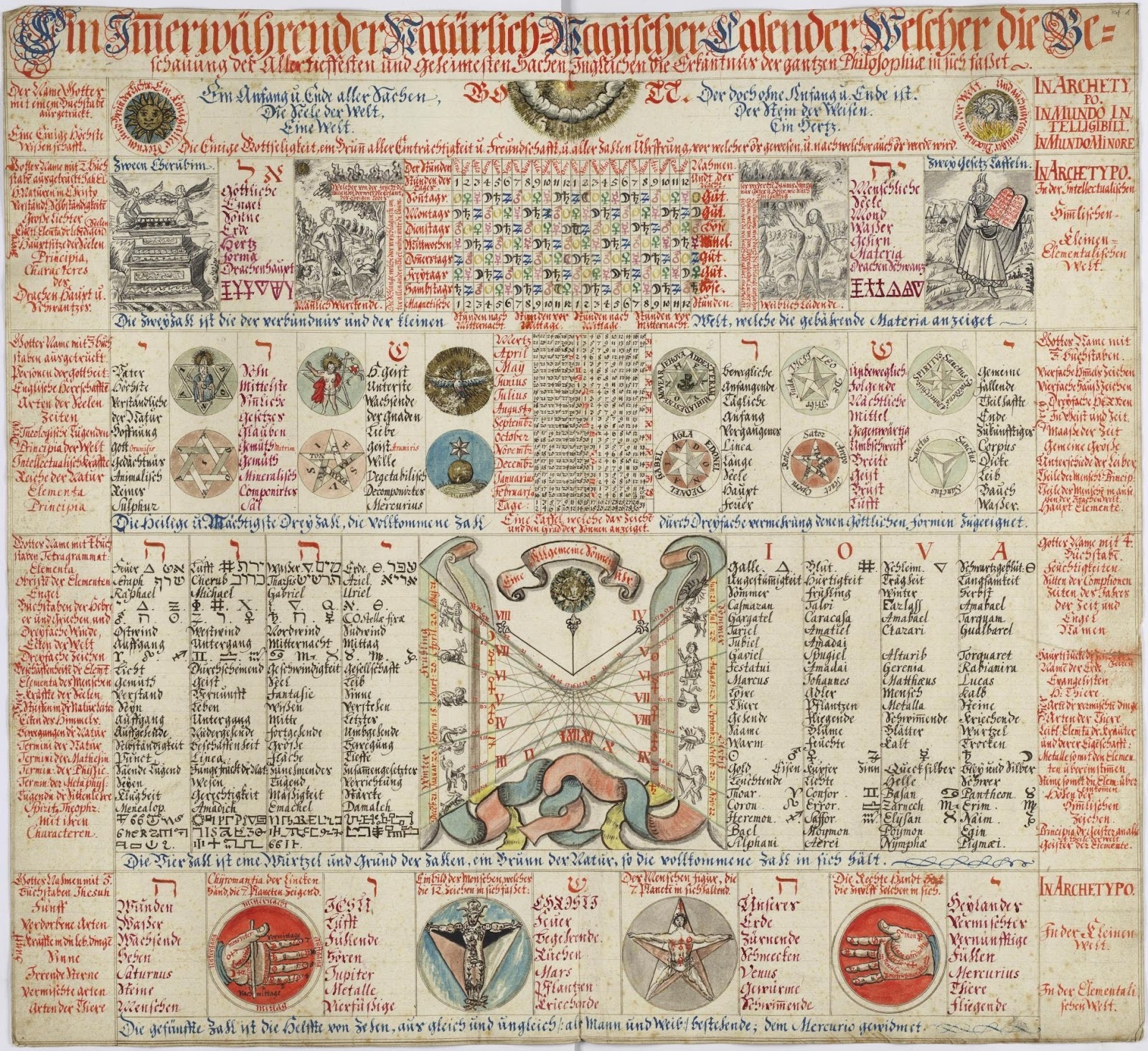
Calendarium Naturale Magicum Perpetuum, 1620. Created by the alchemist and esoteric author Johann Baptist Grossschedel von Aicha, this chart acts as a grimoire and reference. The three sheets together measure to four feet long and two feet wide.



A Hand of Glory is a severed, pickled hand of a hanged evildoer, either the left hand or the hand that did the evil dead. When combined with a candle made from the evildoer’s fat, it has the power to unlock doors and freeze people in place. The candle’s flame can only be put out with milk, and only shows to its holder. Photo of a Hand of Glory on display at Whitby Museum by Badobadop
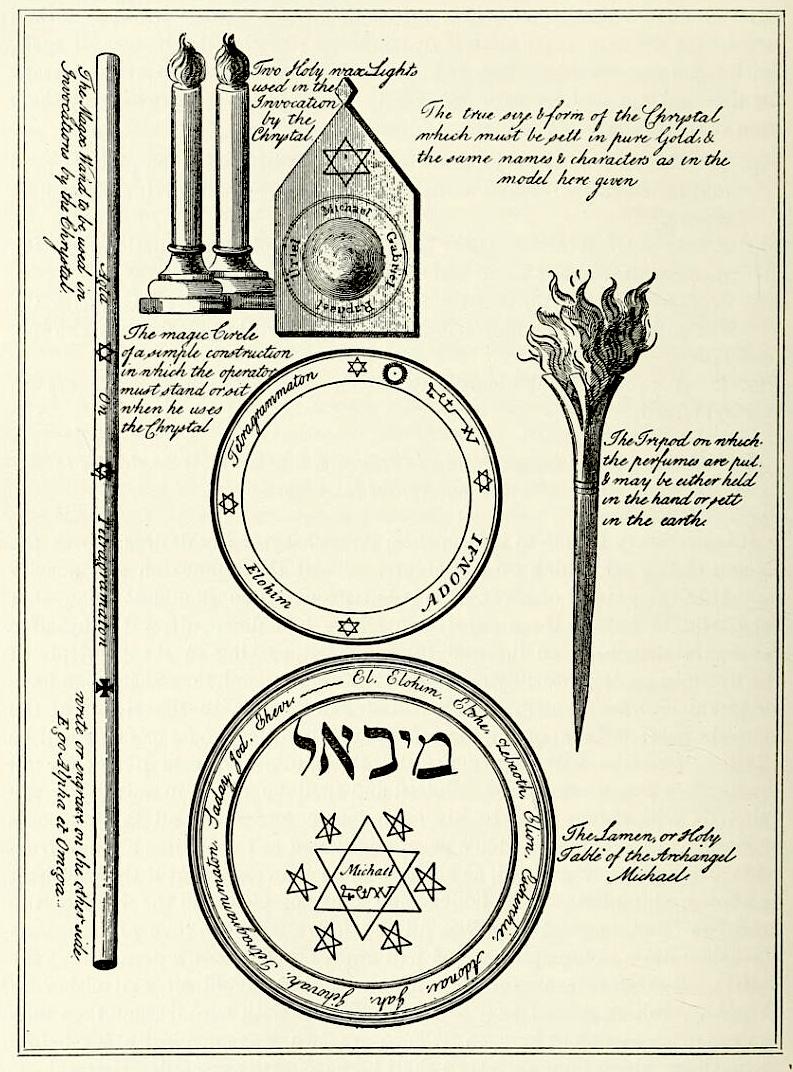
Diagram of magickal instruments described in Trithemius’ Book of Secrets: a magic circle, crystal, the Holy Table of Arch Angel Michael, incense/herb burner, magic wand, and candles. From The Book of the Magi, Francis Barrett, 1896. Source: Wellcome Library
 Purchase Book (affiliate link, free digital version linked above)
Purchase Book (affiliate link, free digital version linked above)

Abracadabra isn’t just something hokey magicians say at kid’s birthday parties. It’s a genuine incantation to ward off malaria and other ailments, and was used in protection talismans. The origins of the word are theorized to be Hebrew or the magic word abraxas.

The mandrake is a mythologized plant with a root that looks like a human figure. The root is poisonous and hallucinogenic, it was once a common anesthetic and potion ingredient. Legends say mandrakes scream and cry when uprooted—killing anyone who hears. So use safe harvesting methods! Image: Ernte eines Alrauns (Medicina antiqua), 1250
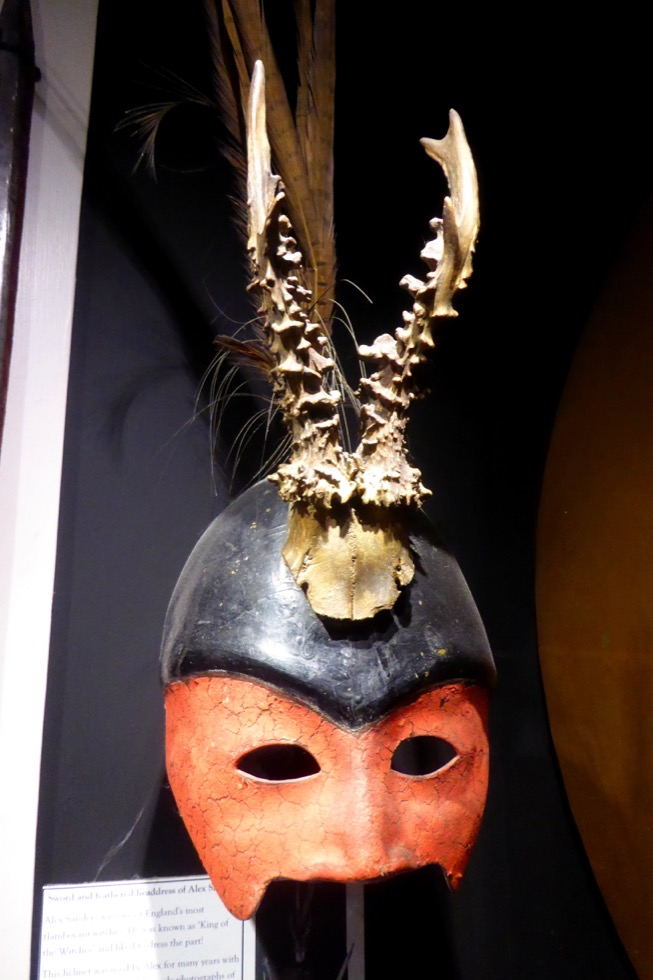
This Ritual Mask, currently housed in Museum of Witchcraft and Magic in Cornwall, belonged to Alex Sanders, also known as Verbius, who was an English occultist and High Priest in the Pagan religion of Wicca.
During his black magic period, he got a job at the John Rylands Library in Manchester. An accusation that he defecated in the library basement led to the discovery that stole pages from a 19th century edition of the S.L Mathers translation of the ‘Key of Solomon’. Image: Ethan Doyle White CC-BY-SA
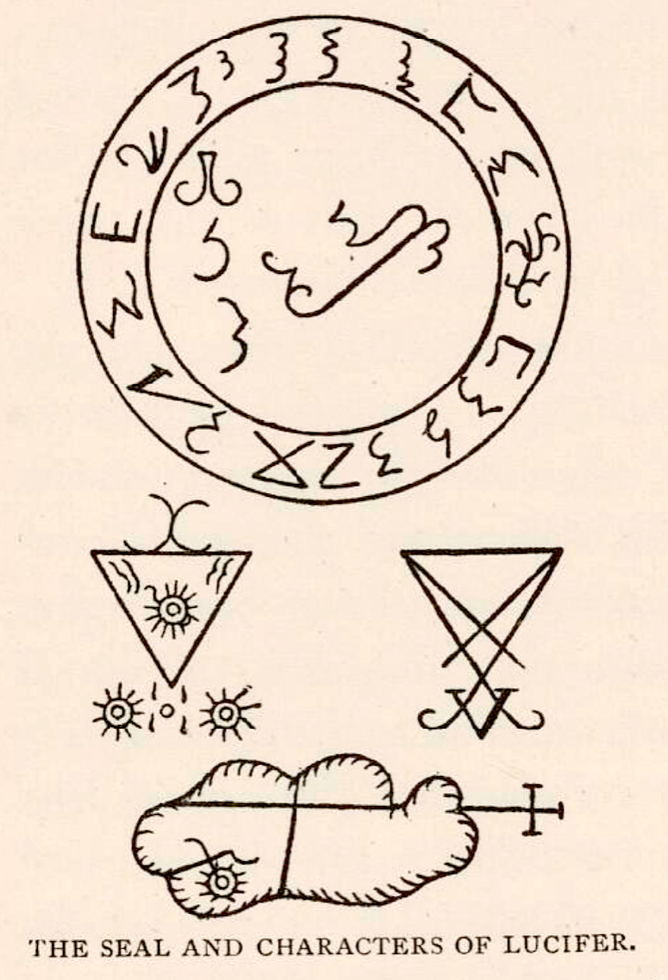
Seals and characters for summoning the greater demons Lucifer, Beelzebub, and Astaroth. In order of effectiveness, the symbols must be drawn in either: the sorcerer’s blood, the blood of a sea turtle, or engraved on emerald or ruby. From Grimorium Verum (16th Century) and The Grand Grimore (18th Century). Source: “The book of black magic and of pacts”, A.E. Waite, Embassy of the Free Mind
 Purchase Book (affiliate link, free digital version linked above)
Purchase Book (affiliate link, free digital version linked above)
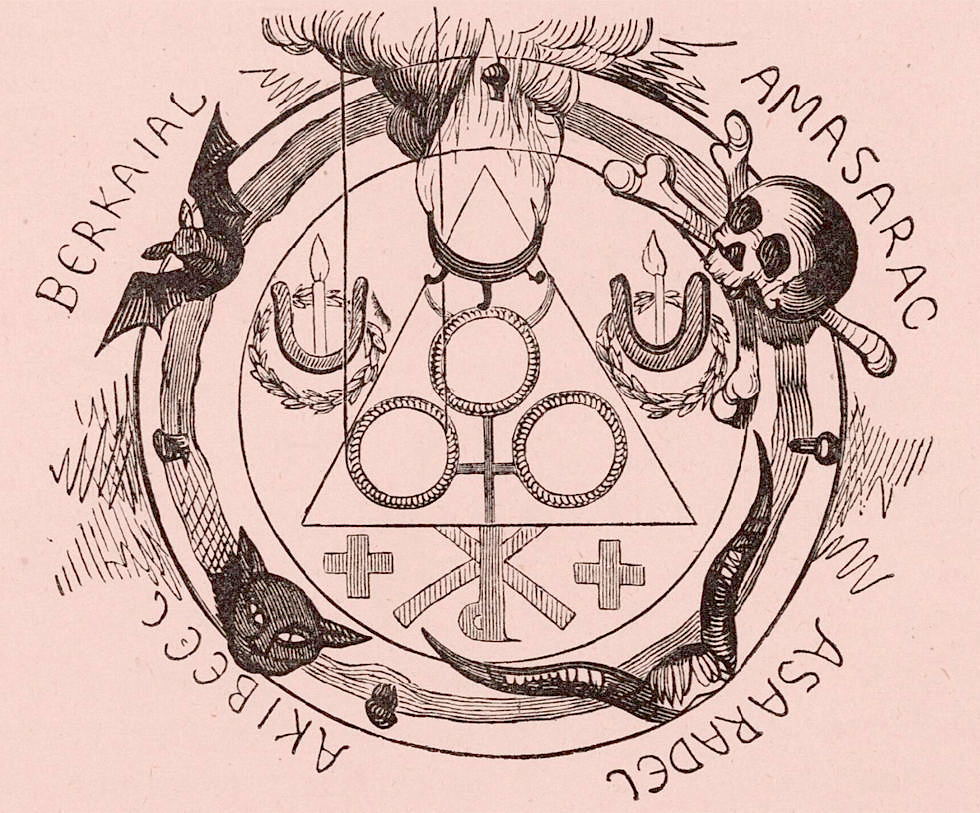
The Goetic Circle of Black Evocations and Pacts, to summon Satan for a deal. The circle is formed from human skin, fastened by nails from a coffin of an executed criminal. A parricide’s skull, goat horns, a bat drowned in blood, and the head of a black cat who was fed human flesh must be placed around it. From The Book of Black Magic and Pacts, A.E. Waite, 1910. Source: Embassy of the Free Mind
 Purchase Book (affiliate link, free digital version linked above)
Purchase Book (affiliate link, free digital version linked above)
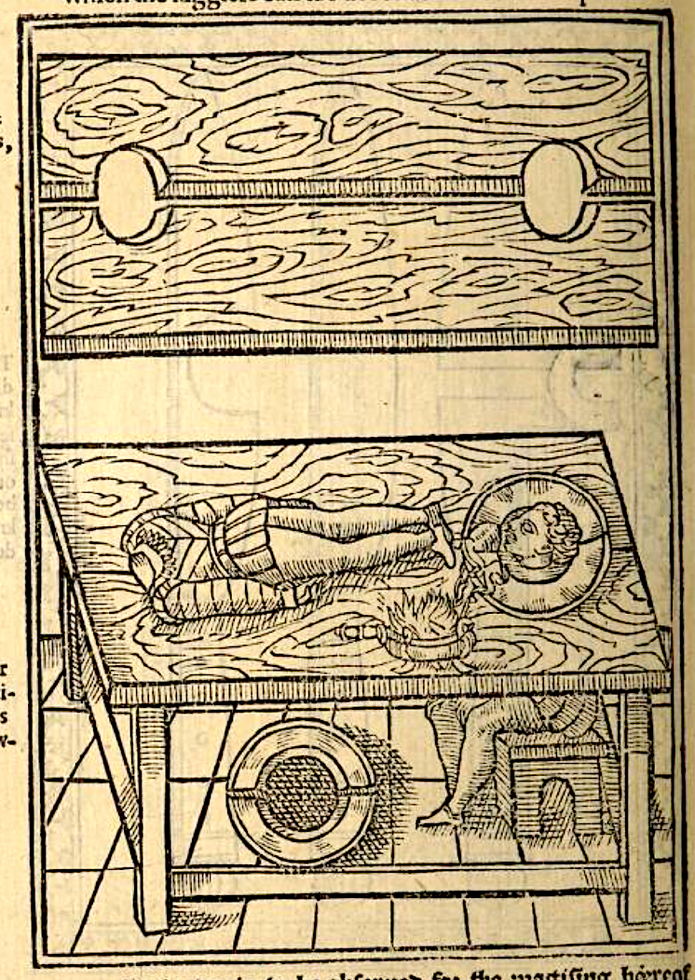
Diagrams exposing instruments of trickery, used by charlatans in the 16th century, to claim to have magical powers. From “The discouerie of witchcraft” by Reginald Scot, 1584. The diagrams expose the following tricks: severed head on a plate, knives into and through the body, juggling, and passing a rope through the body. Source: Wellcome Library
 Purchase Book (affiliate link, free digital version linked above)
Purchase Book (affiliate link, free digital version linked above)

Image with alchemical symbolism from the title page of Aufschlüsse zur Magie by Karl Von Eckartshausen, 1791. The title roughly translates to “Insights into Magic.” Eckartshausen is also the author of The Cloud upon the Sanctuary, an important book to the Hermetic Order of the Golden Dawn. Source: The Embassy of the Freemind
 Purchase Book (affiliate link, free digital version linked above)
Purchase Book (affiliate link, free digital version linked above)